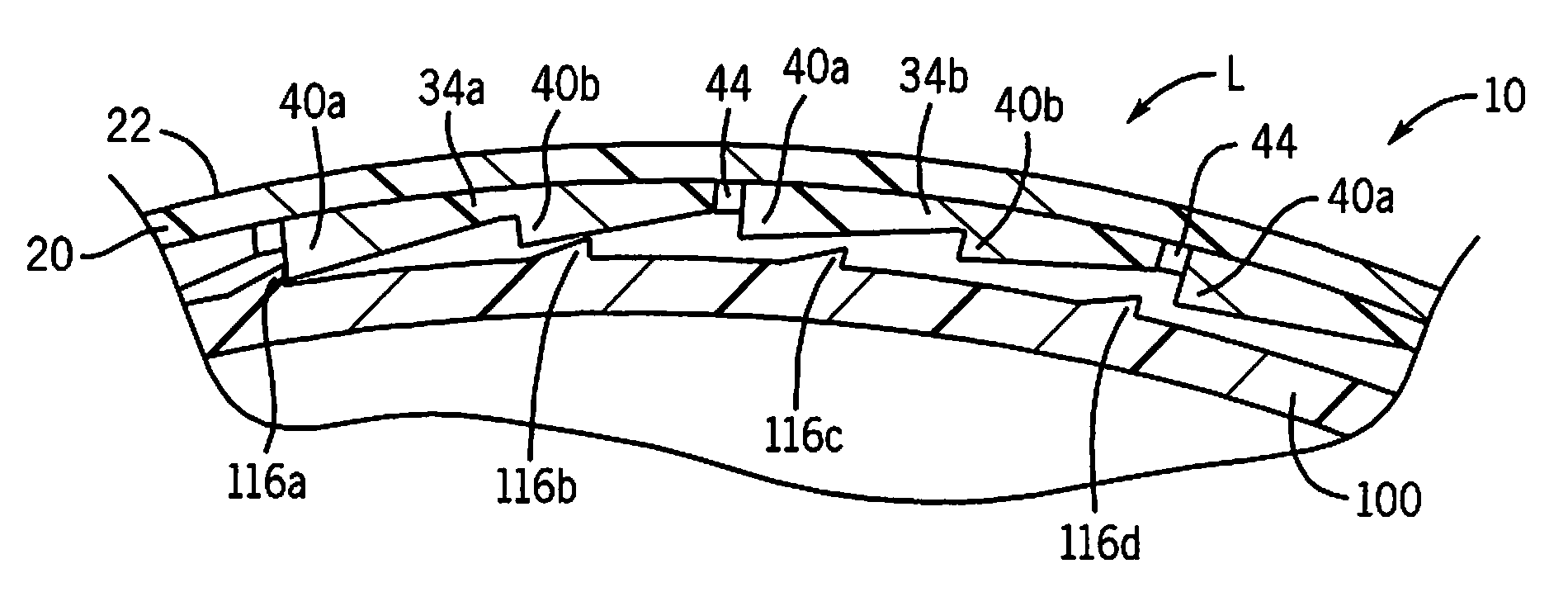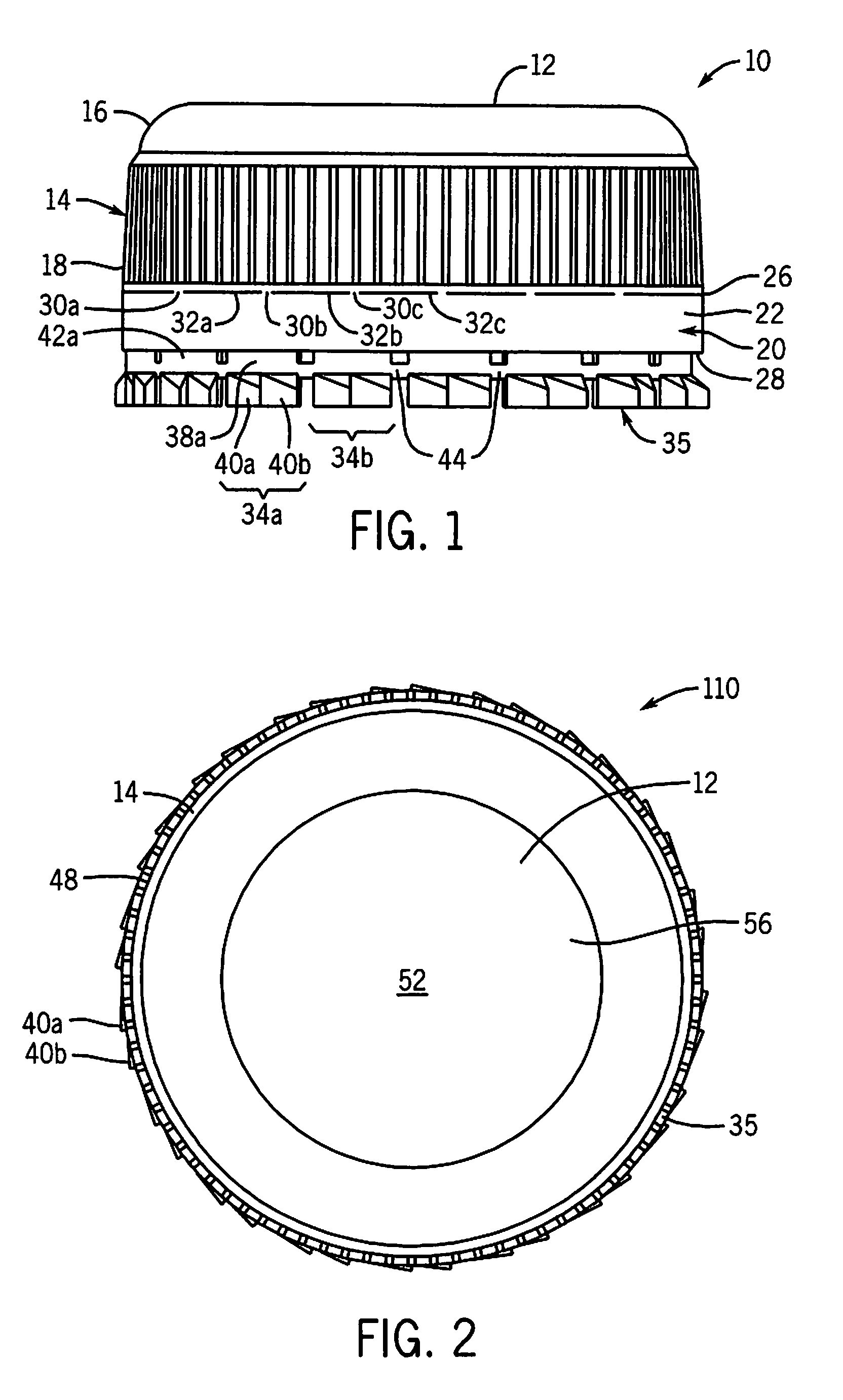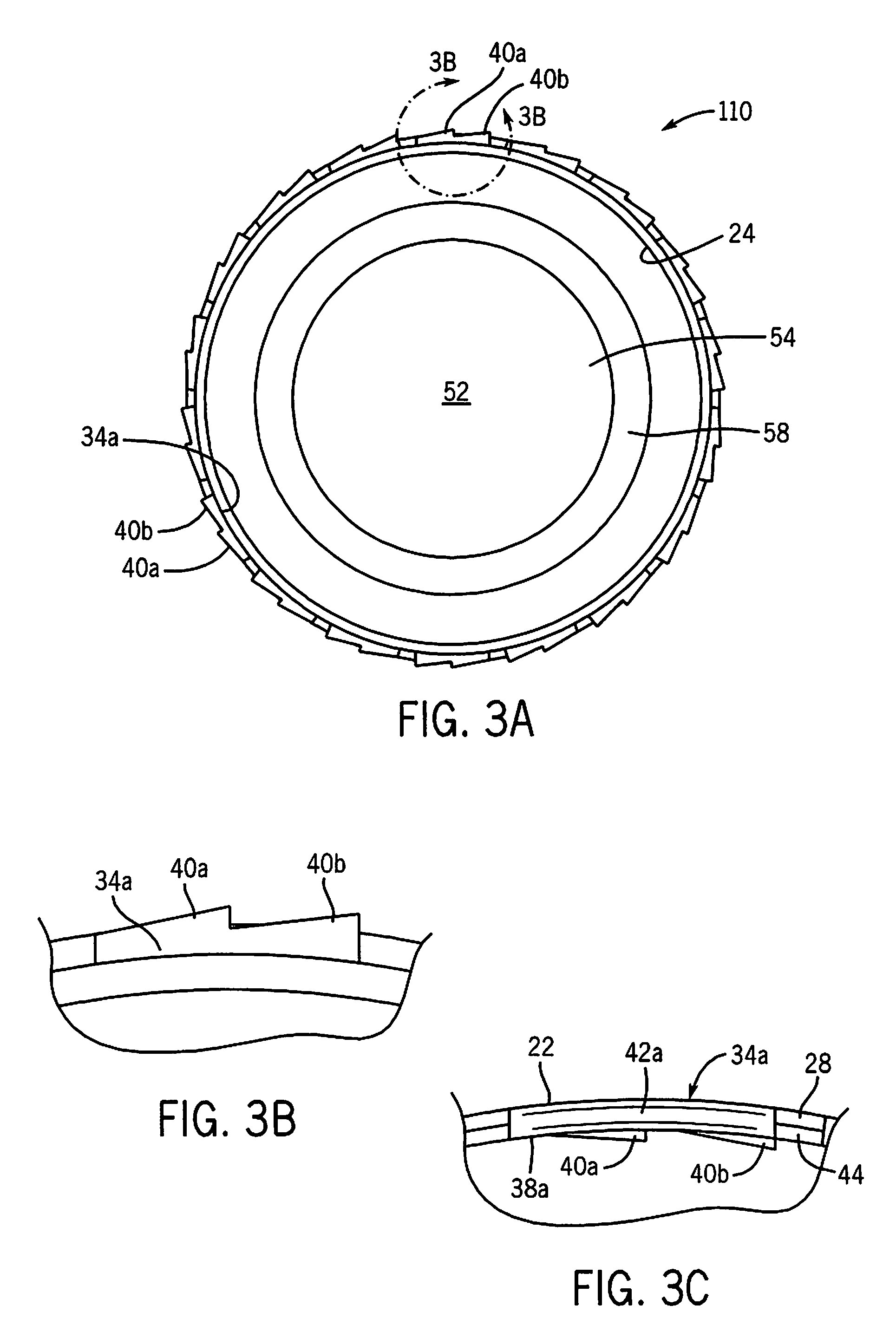Container closure assembly
a container and assembly technology, applied in the direction of liquid handling, applications, caps, etc., to achieve the effect of easy opening of containers and without loss of back-off protection
- Summary
- Abstract
- Description
- Claims
- Application Information
AI Technical Summary
Benefits of technology
Problems solved by technology
Method used
Image
Examples
example 1
The removal torque was measured for closure assemblies made according to the invention and compared with removal torques of prior art closure assemblies. The removal torque for prior art closure assemblies had a typical removal torque of about 17-18 inch pounds, whereas the removal torque for closure assemblies according to the invention had a typical removal torque of about 9-10 inch pounds.
example 2
Closure assemblies like those of example 1 and a third closure assembly having a removal torque of about 23 were tested in interviews with 164 actual users. The users were grouped into three categories: mothers of young children (N=54), arthritics (N=75) and independent-living seniors (N=35). Each user was asked to open each of the three container-closure assemblies in a balanced complete block statistical design (to eliminate sequence bias), and users were asked to rank the assemblies on two parameters: Difficulty of opening was ranked on a scale of 1 to 9 (1=not at all difficult, 9=extremely difficult); and overall “Acceptability” was ranked from 1 to 9 (1 to 5.0 deemed acceptable; 5.1 to 9 deemed unacceptable).
Mean data is presented in the table below.
Closure ofRemovalRemovalInventionTorque = 23Torque = 18(Torque = 10)Difficulty of OpeningSeniors (N = 35)4.95.41.8Arthritics (N = 75)4.64.92.2Mothers (N = 54)N / A3.32.4AcceptabiltySeniors (N = 35) 4.9a 5.4a 1.8b*Arthritics (N = 75...
PUM
| Property | Measurement | Unit |
|---|---|---|
| width | aaaaa | aaaaa |
| width | aaaaa | aaaaa |
| width | aaaaa | aaaaa |
Abstract
Description
Claims
Application Information
 Login to View More
Login to View More - R&D
- Intellectual Property
- Life Sciences
- Materials
- Tech Scout
- Unparalleled Data Quality
- Higher Quality Content
- 60% Fewer Hallucinations
Browse by: Latest US Patents, China's latest patents, Technical Efficacy Thesaurus, Application Domain, Technology Topic, Popular Technical Reports.
© 2025 PatSnap. All rights reserved.Legal|Privacy policy|Modern Slavery Act Transparency Statement|Sitemap|About US| Contact US: help@patsnap.com



